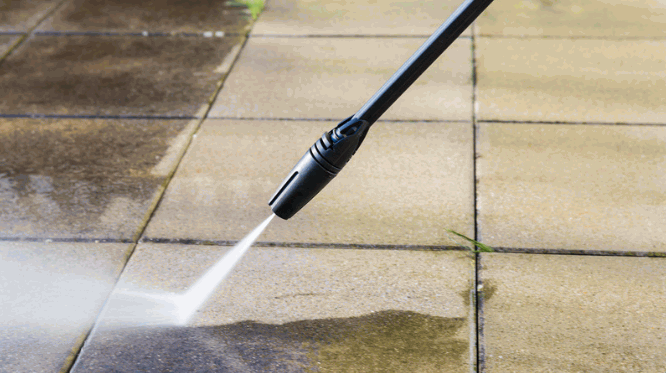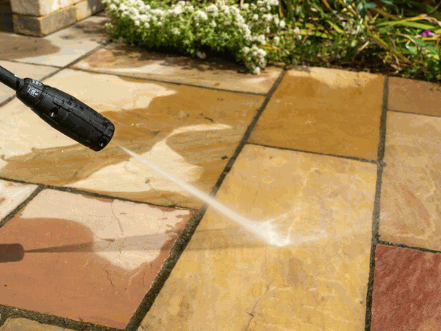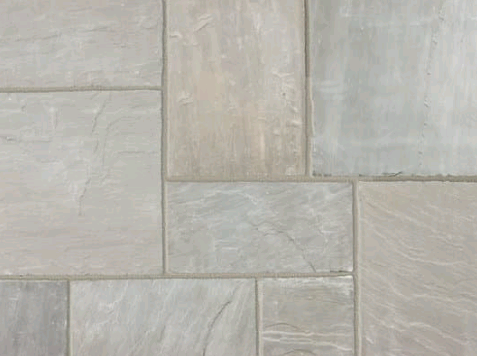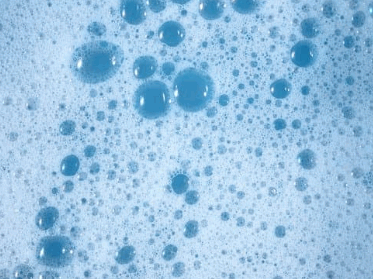
Natural stone looks fantastic, and when well-maintained, it lasts for years. It is easy to see why so many homeowners opt for natural stone solutions such as Indian sandstone paving, but these surfaces need a lot of TLC to ensure they look great and are durable, no matter the Great British weather.
Given pressure washing is suitable for many outdoor surfaces, offering a fast and effective way to remove surface debris, many property owners love high-pressure washing as their number one cleaning solution. However, is a power washer suitable when cleaning Indian sandstone paving slabs?
The Uniwash Team is on hand to help you clean Indian sandstone slabs.
Yes, you can use a pressure washer to clean Indian sandstone, but do so with caution and the appropriate techniques to avoid causing damage to the stone. Our post "How To Pressure Wash A Driveway" maybe interest you. You can check it out.
When pressure washing Indian sandstone paving, follow these guidelines:
Adjust The Pressure: Set the pressure washer to a low-pressure or medium setting to avoid excessive force that could chip or erode the stone's surface. Start with the lowest pressure setting and gradually increase if necessary, but please avoid a high-pressure setting.
Use A Wide-Angle Nozzle: Opt for a wide-angle nozzle or fan spray pattern instead of a narrow, concentrated stream. This approach helps distribute the pressure more evenly and reduces the risk of damage.
Maintain A Safe Distance: Keep the power washer nozzle at least 12 to 18 inches away from Indian sandstone slabs. Holding it too close can cause etching or gouging.
Test On A Small Area: Before washing the entire surface, test a small, inconspicuous area to ensure the pressure and technique suit your natural stone surface.
Angle The Spray: Hold the power washer nozzle at a 45-degree angle to the surface. This method helps prevent the water from directly hitting the stone, minimising the risk of damage.
Work In Sections: Divide the area into manageable sections and clean one section at a time. This lets you give attention to each area and ensures thorough cleaning.
Keep The Surface Wet: Avoid concentrating the pressure washer on a single spot for too long, as this can cause uneven cleaning or damage. Keep the surface damp and maintain a steady, sweeping motion across the area.
Avoid Excessive Force: Let the power washer do the work rather than apply excessive force with your arm. Allow the water pressure to lift dirt and grime from the Indian sandstone's surface.
Consider Using A Detergent: In some cases, a mild detergent formulated explicitly for pressure washing natural stone surfaces can help loosen stains or algae growth. Follow the manufacturer's instructions for the appropriate dilution and application.
Rinse Thoroughly: After pressure washing, rinse the Indian sandstone slabs thoroughly with a garden hose to remove any residual detergent or debris.

To best clean Indian sandstone paving, please follow these steps.
Before starting the cleaning process, gather the following tools and materials:
Clear the surface of any debris, loose dirt, or leaves. It's essential to remove any items that may obstruct the cleaning method and potentially cause scratching or damage to the Indian sandstone. You can also check out our post "How To Clean External Cladding" for more additional insights.
Before applying the cleaner to the entire surface, it's crucial to perform a patch test on a small, inconspicuous area. This will help ensure the stone cleaner is compatible with your Indian sandstone and won't cause discolouration or damage.
If the patch test is successful, dilute the pH-neutral stone cleaner with water according to the manufacturer's instructions.
Using a soft-bristle brush or broom, apply the diluted stone cleaner to the paving slabs. You can try a stiff brush, but often, this is too robust for an Indian sandstone patio. If you like the results with your stiff brush, use it for paving slabs and Indian sandstone paving, but proceed with caution.
Work in sections to ensure thorough coverage. Start from the highest point and work your way down, as this will prevent streaking or uneven cleaning.
Gently scrub the surface of the Indian sandstone with the brush, paying extra attention to any dirty marks or areas with heavy dirt build-up. Avoid using abrasive tools or harsh scrubbing techniques, as they can damage the stone. Once you have scrubbed the area, rinse it thoroughly with a garden hose equipped with a spray attachment.
If areas still require further cleaning, repeat the cleaner, scrub with soapy water (or water with washing up liquid), and rinse steps until you achieve desired results. Stubborn stains may require multiple cleaning sessions, but be cautious not to over-clean them, as excessive scrubbing can harm the stone, so watch out for the elbow grease!
After completing the cleaning process, allow the Indian sandstone to dry naturally. Avoid walking on the wet surface to prevent any potential damage, and consider using a quality sealant to protect the surface.
Yellowing of this material can occur due to various reasons. Natural weathering, exposure to environmental elements, and the stone's reaction to sunlight can cause colour changes, including a yellowish tint. Additionally, organic stains from leaves, algae, or moss and iron oxide staining from metal sources can contribute to the yellowing.
Using improper cleaning products or low-quality sealants can further exacerbate the issue when cleaning Indian sandstone slabs.
To address yellowing, gentle cleaning with mild detergents, such as washing up liquid, removing efflorescence, employing specific stain-removal techniques for iron oxide stains, and using pH-neutral or stone-specific cleaners are recommended.

It is not advisable to clean Indian sandstone with a bleach solution as a bleach mixture can damage the stone's surface, alter its colour, and strip away the protective sealant. Even household bleach is highly alkaline and all the bleach can cause etching, discolouration, and harm surrounding vegetation and the environment.
A mixture of equal parts bleach and warm water can prevent weed growth, moss, and algae, but this solution often causes more problems than it solves.
When you clean Indian sandstone slabs and garden furniture, you want a cleaning solution without too much time or fuss. A power washer is often too powerful, even on a low setting for a paved area cleaning job.
Thankfully, there are simple steps to enjoy regular maintenance to deliver an eye-catching finish for your paving.
